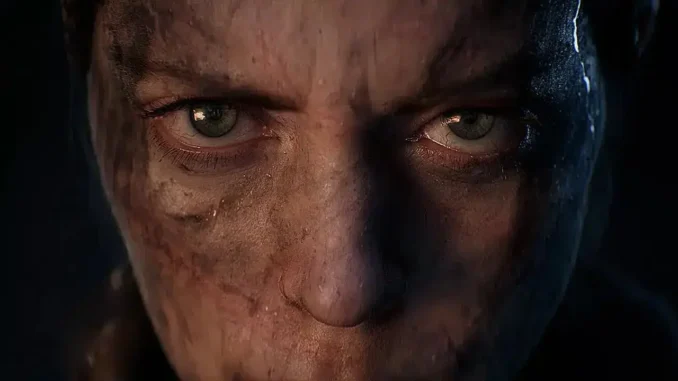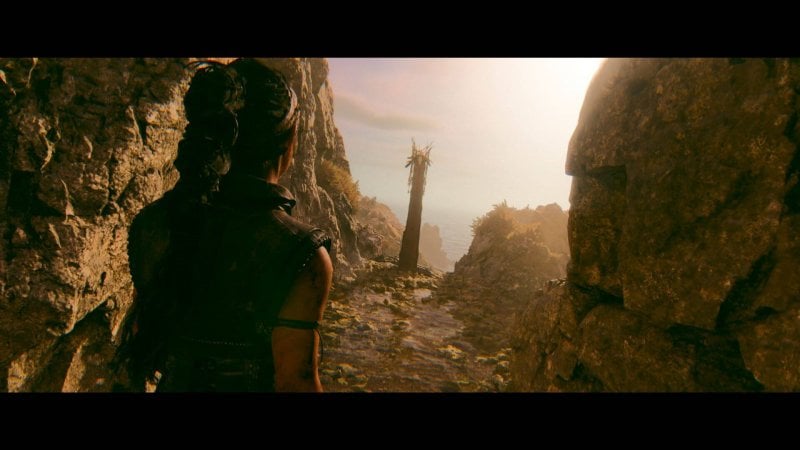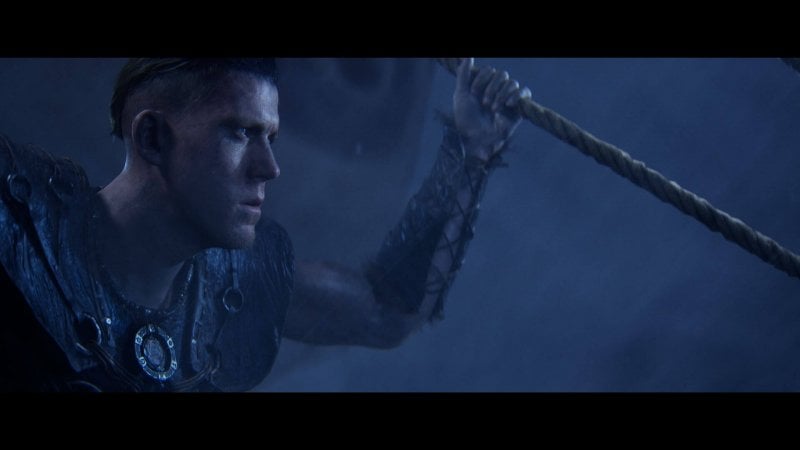
Senua’s Saga: Hellblade 2 the review. Exploration and psychosis in the new Ninja Theory title
After playing it to the end, we are ready to give our opinion on the first, big exclusive of the year for Xbox and PC.
Seven years for the realization, at least eighty people dedicated to the development, a topic, that of psychosis, rarely touched upon in the videogame world and all the weight of a project which, practically alone, must both support the first half of the exclusives of Xbox is to demonstrate how there can be a future for this platform and for its alternative way of conquering an increasingly complex market at risk of implosion.
And as if what has been said wasn’t enough, the work also represents a watershed between Ninja Theory, the software house working on the project , which still thinks like an independent team capable of churning out triple A and a Ninja Theory which in reality is not more so since the game actually entered development, given that the company has been part of Xbox Studios since 2018.
This is the load of expectations and premises that accompany today, May 21, 2024, Senua’s Saga: Hellblade 2 on the PC and Xbox market . A game that is available at launch on Game Pass or can be purchased exclusively in the digital version at a budget price.
But what has Hellblade 2 actually become? How far has he moved away from his predecessor? How much did you want to dare on the technical and gameplay fronts? How much does it aspire to be a title capable of defining the Xbox line-up? There are many complex and valuable questions that we will try to answer during this review. But, a warning is already a must in these very first lines: if you have been following the genesis of this project since its debut, if you are at least competent with the videogame topic and follow these pages of ours consistently, you already know what to expect from this sequel: because Hellblade 2 is exactly what we all expected. For better or for worse.
Senua’s Saga: Hellblade 2 the review. Exploration and psychosis in the new Ninja Theory title
The plot, because there is a lot of that
Hellblade 2 is a strong departure from its predecessor and, despite obviously sharing the same protagonist Senua, it tells a completely new story that in no way requires knowledge of the original chapter . This time we move in fact to tenth century Iceland but, above all, to forcefully distance the two games, there is the desire to make this sequel much more “extroverted”, much more projected towards the outside, where the original adventure it was almost entirely an introspective journey into Senua’s fractured mind. In the new work by Ninja Theory we are much more on the side of a long journey through a wonderful naturalistic territory, where the personal and mental component of the protagonist are still very strong and present and where the voices of the Furies in Senua’s head remain a constant with which we will have to learn to live with. But now there is a real exploration of an open and tangible environment that will constantly vary throughout the heroine’s wanderings.

Voluntarily avoiding any spoilers, outside of what has already been seen in the various trailers, Senua will find herself entangled in a tragic, unfortunate, inevitable and unbalanced battle against some giants who are devastating the earth and putting the sparse Norse peoples at risk of extinction of Iceland. We will get to know different clans, we will sometimes be accompanied by a small group of supporting actors who we will learn to know and accept in their inner gleanings and dramas, and we will find ourselves involved in bloody battles having to deal with very complex and touching topics such as slavery, sacrifice , free will and mental stability. Senua will always be the tipping point of incredible events that will devastate Iceland and we will be transported on a journey where it is often difficult to understand what is really happening around her and what is only happening in her head.
What actually remains, once Hellblade 2 is completed, is the love letter that Ninja Theory dedicated to this impervious and fascinating Northern European territory: a sort of dispassionate testimony towards the landscapes and geology of Iceland and of the Norse traditions, with their myths and those traditions laboriously handed down to the present day.
We tell you clearly: it will never be the gameplay that remains imprinted in your heads and we will shortly explain why, but if you are fascinated by this region, by its naturalistic aspects and by the idea of tackling a sort of “road trip” among the rugged lands of Iceland, Hellblade 2 will certainly be able to fascinate you. And the added value is represented precisely by the extreme complexity of its protagonist, a Senua so well transported to the screen in her pain, in her anxieties and in her constant uncertainties about the founding values of humanity such as good and evil, destiny, the ability to trust others and believe in redemption.

We cannot go into more detail, but the narrative component is certainly the main strong point of this game: a title that can be completed in less than 7 hours , probably even less than 6 by running, and which offers practically no replayability, at outside the collection of the only two collectibles present which simply offer, once completed, a different narrative voice to underline the exploits of our heroine. There is nothing else for an experience that will keep you company for a weekend like a good TV miniseries or a two-part film.
The gameplay, because there is little of that
As we said at the beginning of the review, Hellblade 2 is exactly what we expected. Those who have played the first chapter should know that the sequel is exactly based on that type of gameplay, while for newbies it is essential to be prepared for this title. In fact, it is not a third-person action game full of combat or perhaps a soulslike where tactics and technique reign supreme: here we are faced with the purest meaning of adventure, of graphic adventure , and the player is required exclusively to move forward, to solve some environmental puzzles and to face a handful of swords that act more as gameplay variations than as a key element of the experience.

You walk a lot, a lot, in what is to all intents and purposes an immense outdoor corridor (at least for most of the time, because there are numerous “indoor” sections), you look around to admire landscapes that are nothing short of incredible, we listen to the voices of the Furies in Senua’s head and we observe as spectators the long dialogues with the supporting actors that our harassed heroine will meet on her way.
As we were saying, however, there are some deviations from the pure walk: first of all there are some puzzles that are configured as environmental enigmas where we will have to “reconstruct” specific symbols by observing the surrounding environment and putting some elements of the scenario into perspective so that they are identical to the source material by taking advantage of Senua’s ability to “focus” on something while observing. As the story progresses, these puzzles will become a little more complex because it will also become essential to alter the surrounding environment by interacting with some liquid globes or with lights that allow rock formations to be transformed into dust or vice versa so as to reach different sections of the same environment.
As far as the fights are concerned, we are faced with the most classic one-on-one battles which are “activated” in certain phases of the course in the form of scripts. To be clear, we will not see the opponents at a distance wandering around the scenario as if it were a classic action game or even an open world, but in certain phases of the exploration the fight will be activated which will last for a certain number of opponents who they will happen one after another.
Senua will be able to parry or dodge an incoming blow and inflict two types of attack, a light one with a progressive combo and a heavy one that requires a charging interval. Here too, let’s not expect incredible evolutions over the course of the game: there are practically only 3-4 types of opponents and everything will be resolved depending on the correct timing to dodge the opponent’s attack and respond with a certain number of well-placed shots which, at a at a certain point, they will activate the move that will end the battle. Senua will also be able to charge the Focus, which will allow her to slow down time and launch numerous blows against the helpless opponent to make the battle even easier.

For information, there are three difficulty levels and also a “dynamic” setting which modifies the challenge in real time if we start dying too often or if, on the contrary, we proceed too quickly.
And there are also bosses which, however, serve more to offer a variation on the theme rather than more complex, compelling, long or new fights.
The real underlying problem, in any case, is not the excessive simplicity of this gameplay which, ultimately, thanks to longevity, does not have time to become “boring”, but it is more the total absence of a real progression both in the puzzles and in the combats which makes everything extremely flat and predictable from start to finish. Those coming from the first Hellblade can at least breathe a sigh of relief given that the puzzles and battles are much better integrated into the flow of the adventure and are much less “detached” from the whole context. Furthermore, quick time events are completely absent. However, we cannot hide the fact that for a long time we had that bitter feeling in our mouths of a great wasted opportunity: after all, seven years have passed since Senua’s first adventure and it hurts the soul to realize that in terms of the purest gameplay, Ninja Theory was unable (or did not want) to introduce something truly new and more in step with the needs of today’s players.
Technique, because this is what leaves you speechless
On the technical and technological front, Senua’s Saga: Hellblade 2, we are sure, will make everyone agree that it is absolutely extraordinary and even stunning .
However, we need to put a couple of indications on the ground before going into details. First of all , we played it both on Xbox Series in dynamic 4K and frame rate locked at 30 FPS while on computer we were able to have much more fun with the graphics settings.

In fact, let’s remember that there are currently no settings available on the Microsoft console: the game necessarily runs in a single graphics mode which favors the resolution and quality of textures and models, placing the frame rate in the background, which however remains granitic (on this front helps the “cinematic” bars) and is more than sufficient for the real needs of the player, given that, we reiterate, we are not faced with an action game where it is the speed of the commands and the reaction time in the fights that count .
All the best technologies for upscaling based on artificial intelligence are available on PC, therefore DLSS 3, FSR 3 and XeSS, although only the NVIDIA routine supports frame generation and therefore allowed us to play in 4K with all settings at most with a frame rate that never dropped below 80 FPS. We also took a spin with a 4070 Super and in this case we found ourselves with the same graphics settings between 50 and 60 FPS, always with DLSS 3 quality and frame generation. It should be noted that the title occupies between 6 and 8 GB of VRAM with these settings.
These extraordinary results highlight, among other things, an incredible downward optimization of Ninja Theory’s work which arrives on the market practically without a patch on Day One and without any type of evident problem (at least as far as we experienced on the three configurations). And it is certainly thanks to the massive use of Unreal Engine 5 and its key technologies Lumen, Nanite and Meta Human. This means that there is no hardware ray tracing, there is no path tracing, there is no ray reconstruction or other technologies for which Alan Wake 2 and Cyberpunk 2077 stand out today which, in terms of lighting management they remain on another level. But, precisely for this reason, they remain on another level also in terms of heaviness and the PC-console separation.

Hellblade 2, thanks to this perfect compromise, manages to become the new point of reference for what concerns facial animations, the expressiveness of the faces, the quality of the character models and, above all, the incredible detail of the scenarios and environments which exploit the photogrammetry of materials and territories to a level never seen before, recreating visual glimpses on the screen which, we guarantee, to a non-expert eye, can easily appear like real photos taken in Iceland. Even small details like the management of fluids or flames on the torches manage to be amazing.
Among other things, contributing to the general photorealism is the total absence of an on-screen interface and the extraordinary work done by Ninja Theory regarding the make-up, clothing and props used which have all undergone digitization work at very high resolution and which involved actors and artisans in a way that closely resembles the production of a film. To be clear, we have always started with a real counterpart and then inserted it into the game, instead of creating the assets digitally.
We also say excellent words for the audio sector which boasts, exactly as happened with the first title, a dubbing in English of rare quality complete with binaural audio that will literally make your head explode if you decide to play with headphones (a which we highly recommend) and which will also amaze you with the exceptional interpretation of all the actors involved. Be careful though because there is no dubbing in Italian , but you will have to make do with subtitles. As is actually the case for all other supported languages.

Finally, the musical accompaniment is very good and stands out for a track sung at the end and for a couple of very successful and catchy themes, one in particular which will mark the encounter with a giant with originality.